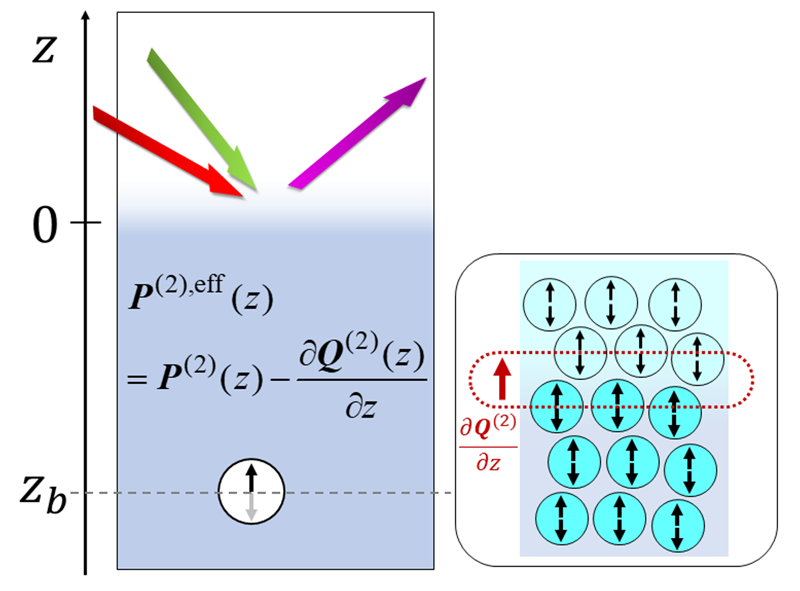When we deal with chemistry at surface or interface, a good probe method to observe the molecules and their behavior is quite useful. Sum Frequency Generation (SFG) spectroscopy possesses excellent selectivity and sensitivity to interfaces, and thus it is used as a powerful tool for the purpose. We have developed theory and computational methods of SFG spectroscopy that allow us to analyze the observed spectra by ab initio molecular modeling and molecular dynamics (MD) simulation (see http://www.chem.tohoku.ac.jp/english/research/research_outcome/p016.html )
Recently we expanded the theory of SFG spectroscopy to fully take account of dipole and quadrupole polarizations. The theory allows us to describe the interface and bulk contributions to the SFG on the same footing in a comprehensive manner. Fresnel transformations for the interface and bulk susceptibilities are rigorously applied, and thereby we expanded and revised the current theory of SFG spectroscopy. We examined the influence of the present corrections with quantitative calculations of the susceptibilities, including dipolar and quadrupolar interactions.

